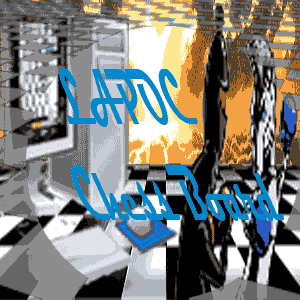| Back to Back Issues Page |
 |
|
Lapoc Chess Board, Issue #002 -- Winning Games With Mobile Pieces July 01, 2011 |
Launch Violent Attacks with Active, Mobile PiecesLapoc Chess Board, Issue #002 -- Winning Games With Mobile Pieces learn and play online chess Hey to all Lapocites. I'm shortly going to turn my attention to endgame strategy and will spend a number of issues discussing it. But first I want to deal with an important topic that applies to all three phases of a chess game. Last time I did a piece on pawn structure and I just wanted to talk about another important theme, possibly the central plank of chess strategy. This is piece mobility. He with the greater mobility almost certainly wins the game. The importance of piece mobility is not a recent discovery. These concepts have been stressed since the Middle Ages when Ruy Lopez, Gioacchino Greco and Giulio Cesare Polerio were the standard bearers of European and World chess. When chess reached Europe from North Africa it was considered interesting but to slow and ponderous for their liking. The pieces were much weaker in the Arabic versions of the game. The pawns could only move one square from the start, there was no castling and only the rook had long range abilities. Development was laboriously slow, full engagement of the two armies took forever and games were lasting several hours. The Arabs seemed to be happy enough with this but the Europeans needed to soup the game up drastically to make it popular. The pawns were allowed to move two squares on the first move, the queen and bishops moves were upgraded to today's standard and castling was introduced to further aid development and to allow the king some protection from all of the new changes. As a result the game became much livelier, the two sides could now tear into each other much faster. A century and change before Philidor began to extol the virtues of good pawn structure, Greco was preaching the gospel on the importance of piece mobility. Statistics show interesting results in chess games where material is level after 20 moves (well into the middlegame). It was found that the percentage of wins correlated exactly with the players who had greater mobility than their opponents in these games. Piece mobility is a determining factor towards who will win the game. So what exactly is piece mobility? In short the measure of the mobility of a piece is the amount of squares that it can move to. A mobile piece or if you prefer, an active piece is a piece that has access to many squares. An immobile piece or a passive piece is a piece that can move to only very few squares. Long range pieces in open spaces are extremely mobile and dangerous. Pieces in cramped positions where they are blocked in by other pieces are passive and ineffective. Active pieces win games. Both players will play for space in the opening. If you can take control of more of the board than your opponent your pieces will have room to breathe, grow and move freely. His will be cramped, getting in each others way. Passive pieces are also more vulnerable to capture as they have less flight squares. So keep your eyes open for opportunities to exploit this. When you split it right down to the atom chess is essentially a fight for space. Every file, rank, diagonal, even square that you take control of is a file, rank, diagonal or square that you deny to your opponent. The more territory your pieces have to work on the more effective they become. The reverse is also true. The less space your pieces have, the more they are forced to the sides, the weaker they become. The whole point of winning territory at the expense of your opponent is so you can post your forces on key squares. The precise evaluation of piece mobility should not just be weighed on the number of squares under your control but the key squares among them. From the moment you begin the battle for space you are attempting to close the net on your opponents position and ultimately the fortress around his king. You take command of an open file, you put one of your pieces on it that now cannot be dislodged except for a heavy price. And now said piece on this new outpost takes command of new squares deeper in your opponent's camp. Your tentacles continue to grow and so it goes. Material is important but the activity of your material is ever more so. Take a look at the 17th Century Italian master Greco's analysis game below which underlines this important point. (Opens in a new tab). See Greco's game here. Comments, ideas, feedback? I'd be stoked to hear from you. Get in touch See you next month. Ken 
|
| Back to Back Issues Page |